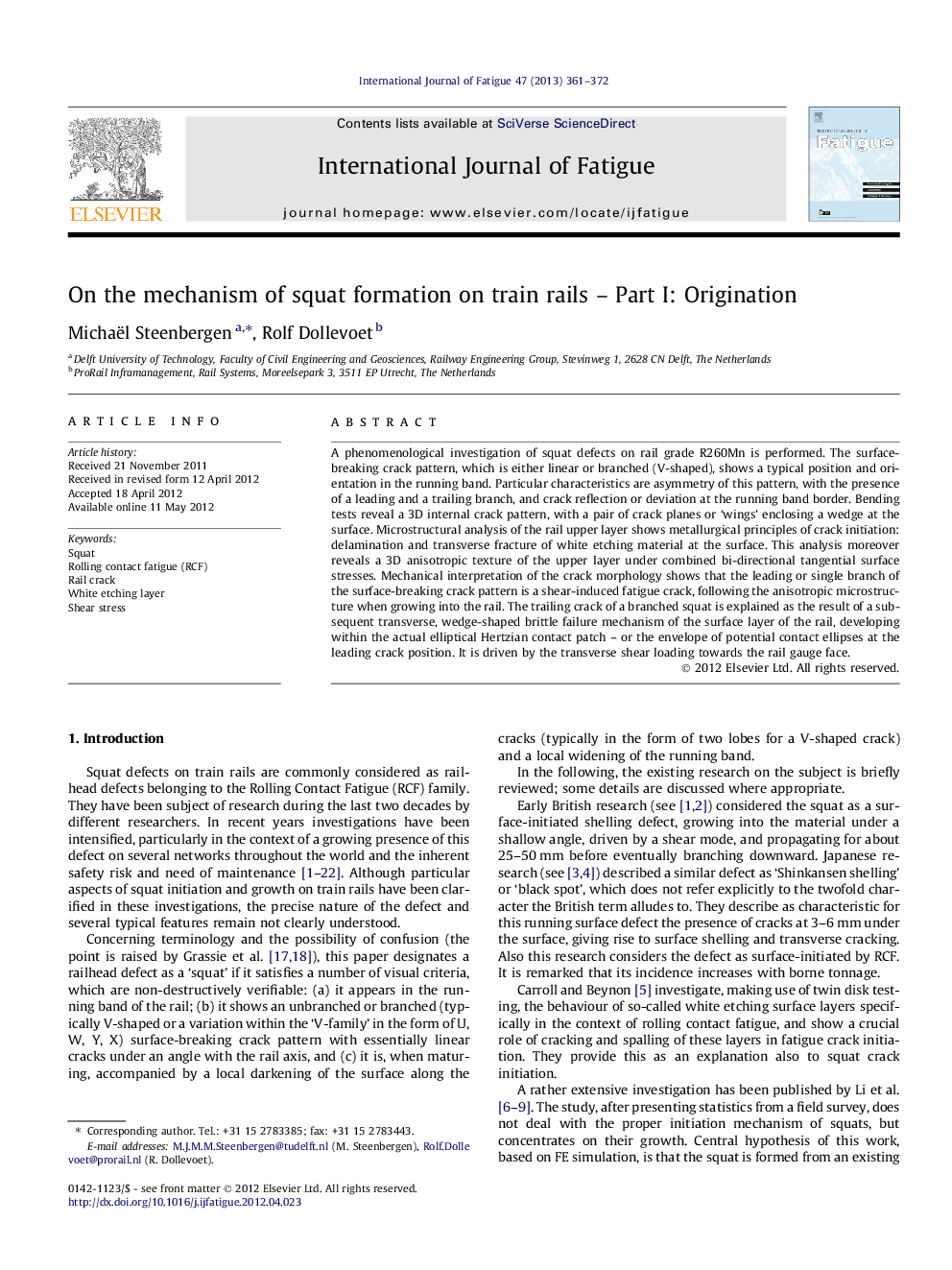| کد مقاله | کد نشریه | سال انتشار | مقاله انگلیسی | نسخه تمام متن |
|---|---|---|---|---|
| 780947 | 1463785 | 2013 | 12 صفحه PDF | دانلود رایگان |

A phenomenological investigation of squat defects on rail grade R260Mn is performed. The surface-breaking crack pattern, which is either linear or branched (V-shaped), shows a typical position and orientation in the running band. Particular characteristics are asymmetry of this pattern, with the presence of a leading and a trailing branch, and crack reflection or deviation at the running band border. Bending tests reveal a 3D internal crack pattern, with a pair of crack planes or ‘wings’ enclosing a wedge at the surface. Microstructural analysis of the rail upper layer shows metallurgical principles of crack initiation: delamination and transverse fracture of white etching material at the surface. This analysis moreover reveals a 3D anisotropic texture of the upper layer under combined bi-directional tangential surface stresses. Mechanical interpretation of the crack morphology shows that the leading or single branch of the surface-breaking crack pattern is a shear-induced fatigue crack, following the anisotropic microstructure when growing into the rail. The trailing crack of a branched squat is explained as the result of a subsequent transverse, wedge-shaped brittle failure mechanism of the surface layer of the rail, developing within the actual elliptical Hertzian contact patch – or the envelope of potential contact ellipses at the leading crack position. It is driven by the transverse shear loading towards the rail gauge face.
► A mechanical explanation is presented for squat initiation on train rails (R260Mn).
► The leading surface crack is a fatigue crack induced by bi-directional shear.
► A wedge-shaped transverse failure mechanism may then develop in the contact ellipse.
► This explains the trailing surface-breaking crack.
► Cracks initiate by delamination and fracture of white etching surface material.
Journal: International Journal of Fatigue - Volume 47, February 2013, Pages 361–372